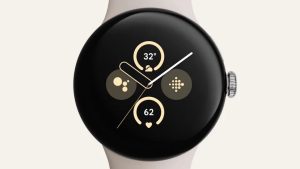As CES 2024 approaches, discussions surrounding smart homes are set to dominate conversations more than any other time throughout the year. Samsung is taking the lead by revealing its partnerships with Tesla and Hyundai, aiming to extend the capabilities of SmartThings into the realms of home energy management and vehicle-to-home automation.
Through the collaboration with Tesla, owners of the electric vehicle (EV) manufacturer’s cars, as well as users of Tesla’s Powerwall and Solar Inverter products, will gain the ability to monitor and manage their homes through Samsung’s SmartThings Energy app. This app will provide detailed information pertaining to energy production, storage, and consumption, offering users a comprehensive view and control over their home energy ecosystem.
An example of the enhanced functionality is that Powerwall users can integrate the Tesla app’s “Storm Watch” feature with their home devices. This integration enables users to receive alerts about extreme weather events, such as hurricanes or heavy snowfall, directly on their connected Samsung TVs and smartphones. Additionally, users can activate the AI Energy Mode before and during power outages, optimizing the conservation of remaining Powerwall energy.
Tesla has paved the way for other companies to leverage similar capabilities, having recently released its “FleetAPI” app. This app enables developers to interact not only with Tesla’s electric vehicles but also with Powerwall, Solar, and Wall Connector. Samsung stands among the early adopters of this technology, and Drew Baglino from Tesla expressed satisfaction that Samsung, a leader in consumer smart home technology, has embraced this opportunity as an early developer.

Samsung’s collaboration with Hyundai extends the SmartThings platform to include Hyundai’s electric vehicles (EVs) and other vehicles, introducing “Home-to-Car” and “Car-to-Home” services. This integration enables seamless connectivity between your smart home and a Hyundai car’s infotainment system, allowing reciprocal control between the two.
For example, users can start their Hyundai car using the SmartThings app, regulate air conditioning, open and close windows, and check charging status, all from the comfort of their smart home. Conversely, from within the car, users can exercise control over home appliances such as TVs, air conditioners, and EV chargers.
This collaboration also facilitates the creation of customized routines, such as activating home lights and climate control upon the car’s arrival or setting the car to an ideal temperature when prompted by the smartphone’s alarm. Furthermore, users can monitor energy-related information about EVs and chargers, optimizing charging times based on factors like energy pricing and solar panel data.
While these features are still in development, Samsung will be offering an early preview of them at its CES 2024 booth, providing a glimpse into the future of integrated smart home and vehicle experiences.




